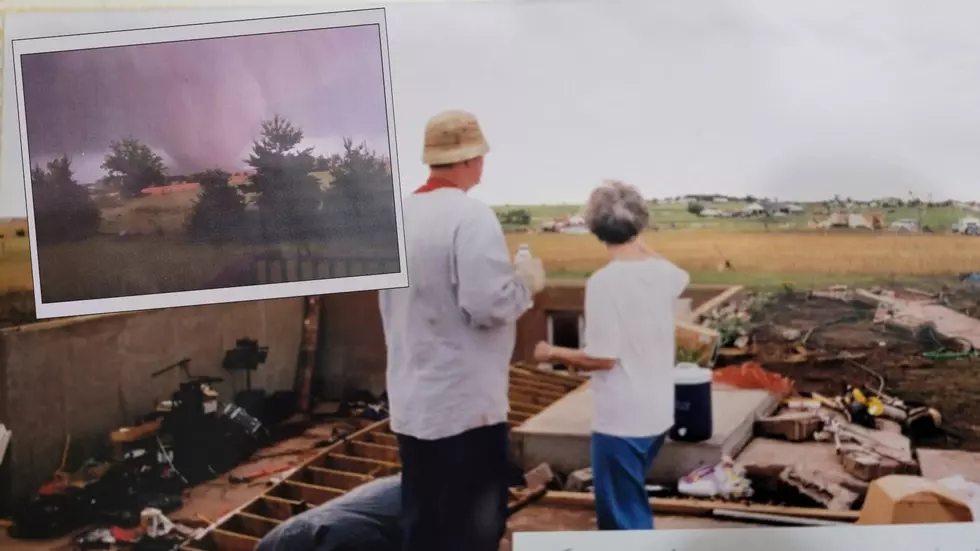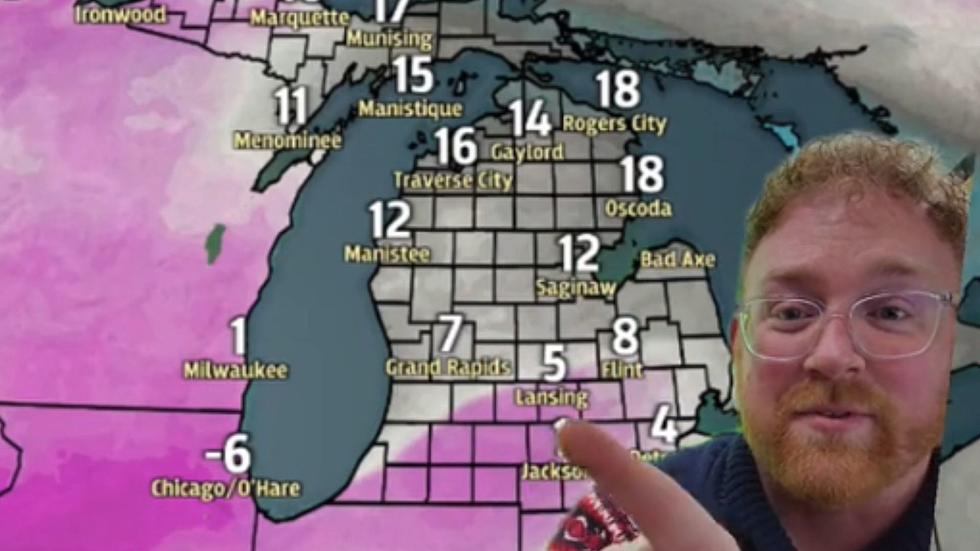While Michigan happens to sit North enough to not always be in the direct path of “Tornado Alley”, we are no stranger to experiencing tornadoes. Since the locations of Tornado Alley can’t be completely defined by the National Weather Service, as no state is entirely free from them, they do occur more regularly throughout Central America; or more specifically between the Rocky Mountains and the Appalachian Mountains.
What to know about Tornadoes
Perhaps the most dangerous thing about tornadoes is the fact that they can range in severity. Like earthquakes, tornadoes don’t have a constant size, wind speed, movement, etc. Meaning the amount of destruction to people's lives always varies.

Speed: While most tornadoes have an average of 70 miles per hour, they can go from almost stationery to 60 miles per hour in an instant.
Distance: Some tornadoes are so fierce they travel miles across states, though their paths can be an average of 2.5 miles wide and 15 miles long.
Duration: Though the most unpredictable thing of all would have to be time. Most tornadoes typically stop within 10 minutes, but some can be as short as 20 seconds to an hour long.
Season: Most tornadoes occur in the months of March, April, May, and June. Though, tornadoes don’t have a proper season. While the majority occur during the hotter spring and summer months, if the temperature and humidity reach a certain point, tornadoes can occur into early fall. The latest recorded tornado ever was in December.
Strength Rating: Tornadoes are rated by the Enhanced Fujita (EF) scale, which ranks the intensity of a tornado between EF0-EF5. Since tornadoes are so hard to accurately estimate because they usually happen so fast and the strength of the winds destroy most equipment in its path, this ratings scale associates the strength of a tornado with the damage it inflicts on its path. For example, if a tornado were to pass with barely ripping off the bark from a tree, it's generally rather weak. If the twister were to uproot the tree entirely, it's rather strong.
EF0- average speed of 85 miles per hour and less. These are the weakest and usually only result in broken branches and signage.
EF1- average speed of 96-110 miles per hour. While still generally weak, these tornadoes cause moderate damage like missing roof tiles, cars moving, and other outdoor items to be scattered.
EF2- average speed of 111-135 miles per hour. These strong tornadoes easily rip entire roofs off homes, uproot trees and other signs.
EF3- average speed of 136-165 miles per hour. This category seems to be the most constant. Strong with severe damage to homes, most trees snapped and/or uprooted, windows broken.
EF4- average speed of 166-200 miles per hour. These tornadoes are violent and cause significant damage. Houses can be leveled, structures blown miles away, and cars get swept up and thrown.
EF5- average speed of 200+ miles per hour. These are the most dangerous of all tornadoes. Homes not only get flattened, but reduced to nothing but rubble. This level can be so intense that it can cause asphalt to peel.
Michigan’s Most Destructive Tornado
Michigan’s most destructive tornado actually occurred in Southwest Michigan. Touching down in Branch County on Sunday, April 11th, 1965, this tornado brought winds of 166 miles per hour. Classified as an F4, this twister traveled a total of 9.2 miles at a width of 33 feet. This massive twister injured 200 people and killed 9 others. While the destruction to people's lives was an obvious heartbreak, the extent of property damage to local farms caused an estimated $250 million in damages. Crops, animals, and homes were flattened in the path of this one tornado.
Michigan’s Brief Tornado History
“There have been 1,176 tornadoes in Michigan from 1950-2020 – the 24th most among states. These tornadoes directly resulted in 244 deaths and 3,375 injuries.” - National Oceanic and Atmospheric Administration
Kalamazoo County:
May 17, 1953 at 3 pm: touched down near Constantine. Categorized as an EF2 at a length of 6.4 miles, 33 feet wide, and with $2,500 in estimated property damage. This twister injured and killed none.
July 27, 1973 at 8:05 pm: touched down near Northwood. Categorized as EF0 with a length of 4.3 miles, 100 feet wide, and an estimated property damage of $250,000. Injuring only 1 and killing none.
April 2, 1977 at 1:32 pm: touched down near Lakewood. Categorized as EF4 at a length of 12.4 miles, 183 feet wide, and estimated property damage of $2,500,000. Injuring 10 and killing none.
May 13, 1980 at 1:58 pm: touched down near Comstock Township. Categorized as EF3 at a length of 10.6 miles, 450 feet wide, and an estimated property damage of $25,000,000. Injuring 79 and killing 5 others.
July 27, 2022 at 9:25 pm: touched down repeatedly near Augusta and traveled through Fort Custer. Categorized as EF1 at a length of 3 miles, 800 feet wide, and an estimated property damage of $480,000. Injuring only 2 and killing none.
Michigan’s last recorded tornado was on September 25th, 2018 in Monroe County. Categorized as an EF0/EF1 at various lengths averaging 3 miles, 250 feet wide, and an estimated $1,300,000 in property damages. However, this twister resulted in no injuries or deaths.
How To Prepare for a Tornado
For the most information on tornadoes and preparedness, check out the National Weather Service website or radio to stay informed on the most recent activity. Michigan has a relatively reasonable number of tornadoes each year, standing at an average of 16. This is compared to the 1,221 that are estimated to occur annually throughout all of the U.S. If you want to stay consistently updated, there are countless weather apps that will inform and help track these weather patterns to look out for.
Know the signs: most tornadoes occur during the day because that is when the air is at its most humid, allowing the negative and positive electrons to interact more when a sudden cold front is swept into the humid air. Thanks to the lighting of the day, most people can tell when the clouds begin to swirl together, then slowly develop a cone like shape. It begins to get dangerous when the tornado crests finally merge and the twister can move on the ground, but this act is always followed by an immensely loud roaring sound.
Be prepared: The best way to be prepared for any situation, tornado included, is to have an ‘emergency’ or ‘apocalypse’ kit at the ready. This can be a storage container or backpack that is filled with some emergency items: extra change of clothes, extra-extra pairs of underwear/socks, toothpaste, satellite phone, water bottle, flashlight, granola bars and/or other types of nonperishable food items.
So, considering how dangerous an impact a tornado has on a community and a single state, as Michiganders let’s take a moment to appreciate the fact that we don’t also have to experience hurricanes. Imagine the damage from water like tornadoes, guaranteed a minimum of 100-150 miles per hour. Now, I can’t speak for everyone, but I prefer only having to occasionally worry about a tornado with winds of 10-20 miles per hour. Especially considering Michigan’s tornado average is relatively low, leaves one wanting to be prepared but not stressed about it.
Fun Fact:
The World’s longest and most destructive tornado touched down on March 18th, 1925. As a category F5, this tornado traveled 235 miles continuously across Missouri, Illinois, and Indiana. Meaning as the world’s longest recorded tornado, it lasted a total of 3.5 hours on the ground and killed 695 people in its path.
Swath Of Tornadoes tear through Midwest
Check Out This 'Tractor Art' & GIANT Weather Vane Found in Gladwin
More From 107.7 WRKR-FM










